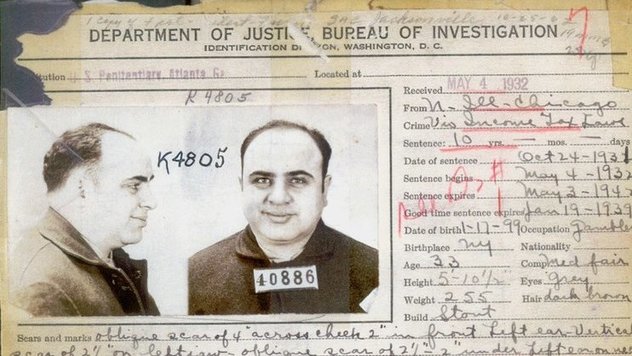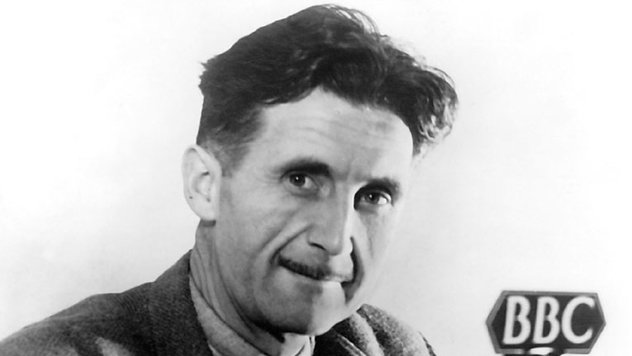 Travel
Travel  Travel
Travel  Creepy
Creepy 10 Haunted Places in Alabama
 History
History Top 10 Tragic Facts about England’s 9 Days Queen
 Food
Food 10 Weird Foods Inspired by Your Favorite Movies
 Religion
Religion 10 Mind-Blowing Claims and Messages Hidden in the Bible Code
 Facts
Facts 10 Things You Never Knew about the History of Gambling
 Weird Stuff
Weird Stuff 10 Cool and Creepy Facts about Collecting Tears
 Humans
Humans The Ten Most Lethal Gunslingers of the Old West
 Misconceptions
Misconceptions 10 Phony Myths and Urban Legends That Just Won’t Die
 History
History 10 Amazing Roman Epitaphs
 Travel
Travel Top 10 Religious Architectural Marvels
 Creepy
Creepy 10 Haunted Places in Alabama
 History
History Top 10 Tragic Facts about England’s 9 Days Queen
Who's Behind Listverse?

Jamie Frater
Head Editor
Jamie founded Listverse due to an insatiable desire to share fascinating, obscure, and bizarre facts. He has been a guest speaker on numerous national radio and television stations and is a five time published author.
More About Us Food
Food 10 Weird Foods Inspired by Your Favorite Movies
 Religion
Religion 10 Mind-Blowing Claims and Messages Hidden in the Bible Code
 Facts
Facts 10 Things You Never Knew about the History of Gambling
 Weird Stuff
Weird Stuff 10 Cool and Creepy Facts about Collecting Tears
 Humans
Humans The Ten Most Lethal Gunslingers of the Old West
 Misconceptions
Misconceptions 10 Phony Myths and Urban Legends That Just Won’t Die
 History
History 10 Amazing Roman Epitaphs
10 Accomplishments Wrongly Attributed To Famous People
Some people toil all their lives, day and night, to make a mark in the field they love. So there’s nothing crueler than seeing someone else grow famous from their work. Yet many of our most famous creators have been challenged as to the originality of their work.
10The US Flag

In popular culture, the first stars-and-stripes was created by Betty Ross, who tweaked a design by George Washington. In truth, there is no hard evidence backing the claim that Ross created the American flag or had anything to do with its creation. The oft-told tale actually originates with her grandson, William Canby, who published an article about it 100 years later. Canby said he was just repeating a story told by his grandmother and admitted there was no other evidence to support it.
A better claim to the flag’s creation might belong to Francis Hopkinson, who played a leading role in designing the symbols of the new country. Among other things, he helped come up with the Great Seal of the United States and the Treasury seal and even helped design the first American currency. Later in life, Hopkinson, who was also a distinguished lawyer and a signatory to the Declaration of Independence, sought payment from the government for designing the American flag. Interestingly, the government did not deny his work on the flag, but Hopkinson’s political adversaries at the Treasury repeatedly blocked his claim.
The case was allowed to drag on for over a year before Hopkinson gave up in exasperation. In its final report, the Treasury argued that Hopkinson wasn’t entitled to compensation because he had been drawing a hefty government salary at the time and couldn’t reasonably expect additional money for any extra services he provided. They also argued that unnamed others had been consulted on the design, so Hopkinson shouldn’t get full credit anyway.
9The Telephone

On August 4, 1922, all phone services in the United States and Canada were turned off for a minute to mark the death of Alexander Graham Bell, widely credited with the invention of the telephone. But that claim was strongly disputed by Italian-American engineer Antonio Meucci, who claimed that Bell had stolen his work on the device. Meucci called his invention the “teletrofono” and publicly demonstrated it in New York in 1860. However, Meucci’s English was poor, and the demonstration was only reported in New York’s small, Italian-language papers.
Because he could not afford the $250 needed for a patent, Meucci settled for filing a notice of an impending patent, which he could still not afford to renew at $10. He sent a model of his design to the Western Union telegraph company, but executives declined to meet with him. The company also refused to return his invention, saying it had gone missing. Two years later, Graham Bell premiered his own telephone and signed a lucrative contract with Western Union. Bell became an instant celebrity, while Meucci died impoverished and in obscurity.
8Al Capone’s Downfall

Elliot Ness and his Untouchables have been the subject of an Oscar-winning movie portraying them as the fearless and incorruptible team that brought an end to Al Capone’s reign of terror. However, while Ness and the Untouchables certainly helped put pressure on Capone’s organization, the real men behind his downfall were Bureau of Revenue investigator Frank Wilson, prosecutor George E.Q. Johnson, and Judge James Wilkerson.
After all, Capone was not jailed for murder or extortion, but rather on the charge of tax evasion—an idea Wilson and his team worked tirelessly on after discovering a confiscated ledger from Capone’s gang. Wilson even got to meet Capone once for an interview about his tax issues. At the end of the interview, Capone asked “How’s your wife, Wilson?” The subtle threat didn’t scare Wilson away from his investigation, and he later later provided enough evidence for Johnson to bring charges against Capone.
Johnson agreed to a two-and-a-half year plea bargain sentence with Capone’s attorney. However, on the day he was to be sentenced, Judge Wilkerson surprised everyone by stating there would be no plea bargain.
Instead, he insisted on a trial. Capone subsequently tried to bribe prospective jurors, but the judge pulled another surprise by having the jury switched just before the trial was to begin. The final nail in Al Capone’s coffin was nailed by Judge Wilkerson himself, who imposed a sentence of 11 years, the longest term ever for tax evasion.
7The Tank

The invention of the tank is usually credited to Sir Ernest Dunlop Swinton, a British military officer and author. But the real credit might belong to Australian soldier Lance de Mole, who apparently came up with the idea for the tank in December 1914 (although he might have been working on it as early as 1912). He subsequently designed an armored vehicle with chain wheels, allowing for easy steering while traveling off-road and over trenches.
De Mole immediately submitted his plans to the British War Office, which rejected them, believing the concept to be impractical. He would present his idea again in 1915 and 1917, only to see it rejected both times, although his third attempt did secure him a grant of £987 to offset his expenses. Swinton would eventually develop his own plans for the tank after seeing a tractor with a gun on it. If the War Office had only embraced de Mole’s ideas in 1914, World War I might have been brought to an end years earlier.
6Romeo And Juliet

Almost the entire world has heard of William Shakespeare and his masterpiece Romeo And Juliet. But how many people have heard of Arthur Brooke? In 1562, Brooke published a long narrative poem titled The Tragical History Of Romeus And Juliet, which would go on to be the key inspiration behind Shakespeare’s later play.
Perhaps the main difference between the two is the timeframe. The events in Brooke’s poem take nine months to unfold, while Shakespeare’s work takes place over just four days. For example, in Brooke’s poem, the two lovers were married for months before Romeus killed Juliet’s cousin Tybalt. Additionally, Shakespeare created the first and second scenes from scratch. That allowed him to introduce almost all the major characters in the first act, unlike Brooke, who only introduced Paris after Tybalt’s death.
Even Brooke wasn’t the originator of the Romeo and Juliet story, having based his own work on a poem by Pierre Boaistuau, who was in turn inspired by an Italian novella by Matteo Bandello. And Bandello himself based his novella on an earlier novel by Luigi da Porto. Still, critics agree that Shakespeare’s version is the best, even if it’s not particularly original.
5The Discovery Of Penicillin

We’ve already covered how Alexander Fleming discovered penicillin by accident, decided it was useless, and then ignored it for the next decade. It was only when another team of scientists, including Norman Heatley and Howard Florey, successfully developed penicillin for medical use that Fleming swooped back in to scoop up all the credit. Although Fleming effectively abandoned his discovery, he still became one of the most famous medical pioneers in history.
Actually, Fleming wasn’t even the first doctor to take note of penicillin. In 1896, Frenchman Ernest Duchesne discovered the mold’s medical properties while watching young Arab kids use it to treat saddle sores. After conducting further experiments, Duchesne recognized the mold as a type of Penicillium and proceeded to use it to heal some guinea pigs from typhoid.
Duchesne used the research as his doctoral thesis. He also sent the research to the prestigious Institut Pasteur, hoping to achieve acclaim for his discovery. But since Duchesne was a complete unknown, the Institut completely refused to acknowledge or review his work. Duchesne died of tuberculosis in 1912.
4The Dystopian Masterpiece

D-503 is a man living in a totalitarian country where houses are made of glass so that the Bureau of Guardians can monitor its citizens. As time goes on, D-503 gets tired of the situation and rebels against its leader, “The Benefactor.” He is assisted by a woman named I-330, for whom he quickly develops an attraction. The rebellion fails and D-503 is caught and subjected to the “Great Operation,” which changes him from a man who wanted the state’s collapse to one who hopes for its survival.
If you’ve ever read George Orwell’s 1984, you’ll probably find elements of the above summary familiar. The summary is from a book called We, written by Yevgeny Zamyatin. The book was published about two decades before George Orwell published his own masterpiece. In fact, we can say for certain that Orwell read We during that time, since he actually published a review of it in the Tribune. Ironically, he suggested that the novel had a “rather weak and episodic plot which is too complex to summarize” and accused Aldous Huxley of ripping it off for his own novel, Brave New World.
3The First Summit Of Everest

Were Edmund Hillary and Tenzing Norgay the first people to reach the peak of Everest? Maybe, but evidence is mounting that George Mallory and Andrew “Sandy” Irvine may have reached the peak in 1924. In fact, the pair were last spotted just few hundred yards away from the peak.
In 1999, Mallory’s body was found 8,150 meters (26,760ft) up the mountain. The picture of his wife which he had planned to drop at the top of Everest was not in his pockets. His goggles were in his pockets, which suggests he was descending the mountain in bad light when he died. For these reasons, it is often assumed that he reached the top of the mountain but died before making it back down. Irvine’s body was never found, which is intriguing since he was carrying the camera. If found, the pictures could be processed to reveal if the pair actually got to the top.
Always a gentleman, Sir Edmund Hillary never felt the need to dismiss Mallory and Irvine. When asked about it, he would only say that he didn’t know who had reached the summit first, but he was sure he and Tenzing were the first to make it back again.
2Aspirin

Unveiled in 1899 by a German company called Bayer, Aspirin soon became one of the most popular drugs on the planet. Until recently, it was commonly said to have been invented by Felix Hoffmann, a German chemist working at Bayer at the time, ignoring the real man behind it—a German Jew called Arthur Eichengrun.
Bayer didn’t publish much information on Aspirin, since they were afraid of copyright theft by their competitors. So the first claim to have invented it wasn’t made until 1934, when Hoffmann wrote that his father’s hatred for then-common rheumatism medications inspired him to invent the wonder-drug. Eichengrun was apparently outraged by this but felt unable to respond due to the rise of the Nazis. By 1934, Eichengrun had left Bayer to start his own company. Since the Nazis didn’t look kindly on Jewish businesses, he had taken an Aryan partner and was trying to lie low. He still lost his company in 1938 and first claimed to have invented Aspirin while imprisoned in a concentration camp.
Having survived the war, Eichengrun repeated his claims in 1949 but was ignored. In 1999, Strathclyde University professor Walter Sneader revived the story, arguing that Hoffman had synthesized Aspirin under Eichengrun’s direction and without really understanding what he was doing. Even when Bayer rejected the product, Eichengrun persevered, arranging for secret tests which persuaded his bosses it had potential. Although Hoffman deserves some of the credit, it now seems that Eichengrun was the true creator of Aspirin. But don’t worry about Hoffman. He still has a claim to fame for synthesizing another of Bayer’s famous products—heroin.
1The Assembly Line

Henry Ford was a great inventor, innovator, and creator. If nothing else, he should be loved for pioneering the weekend. On the other hand, he did not create the assembly line like most of us think. The credit for the assembly line belongs to Ransom E. Olds, the founder of Olds Motor Vehicle Company and an innovator largely obscured from automobile history.
Before Olds, labor was done mainly by hand, leading to slow output. Facing huge demands for his cheap cars, Olds patented the assembly line in 1901. Within a year, production at his Detroit plant had increased from a paltry 425 cars per annum to an astounding 2,500 vehicles per year. Sadly, his company wouldn’t prove as enduring as Ford’s. While Ford is often mistakenly credited with the invention of the assembly line, he really only made one major change to Olds’s model—placing the cars on a conveyor belt to create a “moving” assembly line.
Elizabeth is an aspiring writer. You can like her Facebook page and follow her on Twitter.








